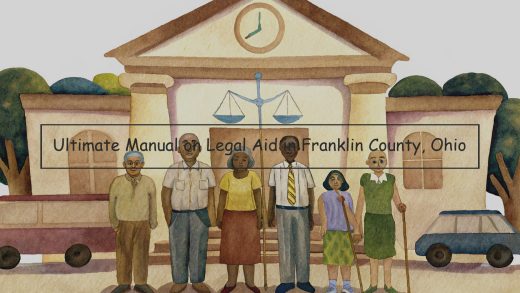BAC Levels and the Legal Limits in Wisconsin
Wisconsin generally has a .08 blood alcohol concentration (BAC) limit for drivers. This BAC is about 6-8 drinks over a 2-3 hour period for the average adult. If you have a BAC of .08 or greater, you can be charged with Operating While Intoxicated (OWI) in Wisconsin. The same is true in all other 49 states.
In Wisconsin, the legal BAC for people under the age of 21 is .02%. So, if you are 20 years old and have been drinking , a BAC of .028% can get you charged with citation for possession of alcohol as a minor, regardless of whether that BAC caused you to lose control of your vehicle.
If you are a commercial driver operating a vehicle with a commercial driver’s license (CDL), the legal BAC limit is lower. For commercial drivers, a BAC of just .04% is illegal to operate a commercial motor vehicle in Wisconsin.

Consequences for Drinking Above the Limit
In Wisconsin, if an individual exceeds the legal blood-alcohol limit of .08%, they may face serious consequences. First, they can be charged with operating while intoxicated, which is a first offense if they have not been convicted of alcohol-related offenses within the past 10 years. If convicted, first offenders can expect between $150 and $300 in fines, a suspended driver’s license for six to nine months, mandatory alcohol assessments, and possible treatment programs.
Second, the driver will need to complete a treatment program approved by the Wisconsin DOT. Under Wisconsin Statute §346.65(4)(a), drivers must participate for a minimum of 32 hours for a first offense. The sentences increase in severity for repeat offenders.
Penalties increase for repeat offenders. If the defendant has between two and four intoxicated driving convictions within the past 15 years, they can face $300 to $1,100 in fines, a one-year driving suspension, and a citation for installing an ignition interlock device. Here are the penalties for repeat offenders in this range:
BAC 0.17% to 0.249%:
— Fine: Up to $1,115.50
— Jail Time: Five days to six months
— License Suspension: 9 months
BAC 0.25% to 0.379%:
— Fine: Up to $1,155.50
— Jail Time: 10 days to 6 months
— License Suspension: 12 months
BAC 0.380% and over:
— Fine: Up to $1,525.50
— Jail Time: 30 days to 1 year
— License Suspension: 36 months
Administrative penalties apply to anyone who operates a motor vehicle with a BAC of .08% or higher. They can also attach to a civil violation for underage drivers, so even those under 21 who drink one beer and drive can get an administrative penalty. Below are the penalties for operating a motor vehicle with an illegal BAC level.
BAC First Offense (Civil Violation)
— If .08% to .089%
— For underage drivers.
— Penalty: $150 to $250 fine, plus $365 for the DOT surcharge, for a total of $515 to $625
BAC Second Offense (Criminal Violation)
— If .08% to .089%
— Criminal violation.
— Penalty: $350 to $1,100 fine and a nine-month driver’s license suspension.
BAC Third Offense
— If .08% to .089%
— Criminal violation within five years of a second offense.
— Penalty: $600 to $2,000 fine and a two-year driver’s license suspension.
BAC Fourth Offense
— If .08% to .089%.
— Criminal violation within five years of a third offense.
— Penalty: $1,100 to $2,000 fine and a three-year driver’s license suspension.
BAC Fifth Offense
— If .08% to .089%.
— Criminal violation within five years of a fourth offense.
— Penalty: $3,600 to $10,000 and a revocation of the driver’s license for at least one year.
BAC Six Offense
— If .08% to .089%.
— Criminal violation within five years of a fifth offense.
— Penalty: $10,000 fine and no driver’s license.
Exceptions to the Legal Limit
Although some people may think that the law in Wisconsin is "three beers and you’re good," the truth of the matter is that there are a number of exceptions and special cases to the legal drinking limit in Wisconsin. One particularly important exception is for repeat offenders. Any driver convicted of OWI (operating while intoxicated) within ten years of a prior conviction, even if it was for a lesser offense, will be subject to zero tolerance laws. This means that they will be charged with an OWI violation if their blood alcohol content (BAC) is over the legal limit of .08 percent, but they will also be charged with a BAC of .02 percent, which is 0.02 percent lower than zero alcohol.
The state also has zero tolerance laws for operators of recreational vehicles. Any operator of a non-commercial motorboat, all-terrain vehicle, snowmobile or off-highway motorcycle under the influence of alcohol or drugs with a BAC of basically zero will still face prosecution. This assumes, of course, that the operator is over 16 years of age, at which point they will be considered under "adult" drinking behavior laws. The legal drinking limit in Wisconsin is basically equivalent to .08 BAC in these cases as well. Those under age 16, however, can be cited with a "provisional operator’s license" requirement that limits them to .00 BAC.
BAC Measurement and Enforcement
The means by which law enforcement officials in Wisconsin measure and enforce the legal drinking limit is something that is important for all responsible drinkers to understand. Lots of people have heard of a breathalyzer—those devices that police officers use to measure a person’s blood alcohol content at the scene of an arrest—but few people truly understand the mechanics of how these devices work or how the officers enforce their results.
The Office of the State Laboratory of Hygiene (OLS) is responsible for maintaining, calibrating and certifying all of the intoximeter breath testing machines throughout the state. When an officer suspects a driver is DUI, he or she will often request that they perform a preliminary breath test, which is a breathalyzer that’s performed at the scene of the arrest. The officer will routinely ask the driver to blow into the device for a few seconds. The breathalyzer calculates the driver’s blood alcohol content based on the air that’s been exhaled into the machine. The results of the preliminary breath test (which the OLS has stated can be as much as 15 to 20 percent inaccurate) are only valid for use as probable cause in making an arrest. They cannot be used in court.
The officer will typically then ask the driver to perform a series of field sobriety tests, designed to test their coordination. The most common tests involve standing on one leg, walking a straight line and performing a "finger test." These tests are far more inconclusive than the preliminary breath test. Because the conclusions of the officer rely so much on his or her observations rather than on concrete data, the field sobriety tests don’t generally hold up in court. Even breathalyzer tests performed with an intoximeter are not inherently reliable, particularly if the alcohol level is only slightly above or below the legal limit. Results can be affected by mouth alcohol , residual alcohol in the breath or nose and variations between breath and blood alcohol levels. In order to truly maximize accuracy for proscution in the courtroom, these devices must be calibrated and documented with the "traceable" chain of custody which is expensive and time-consuming to maintain.
In order to produce accurate blood alcohol level results during court evidence using the intoximeter breath testing machines, a blood test must be performed within three hours of a DUI arrest. Otherwise, the blood alcohol content is calculated by using a test known as the Widmark Formula, which believes everyone of a similar height and weight metabolizes alcohol in the same way—the same might be true for an average Lap Dog but not an average human. This formula simply takes the weight of the person and multiplies it by the number of drinks estimated to be consumed, then makes adjustments for sex and whether the person is drinking beer or hard liquor. For example, if a 165-pound man drinks five beers in one hour, he would have approximately a 0.1 blood alcohol content. If that same man drank four bottles of beer in one hour, he would have a blood alcohol of 0.08, which is the legal limit in Wisconsin. If it took him 90 minutes to drink that same amount of beer, however, the intoximeter might only display a BAC of 0.06, with the Widmark Formula estimating 0.09. Most judges throw these results out during court, especially for DUI defenses where the driving individual’s height and weight differ from the results of the Widmark Formula. The officers only have so much control over the outcome of a DUI arrest. When it’s necessary, prosecutors will call on reputable forensic scientists to testify about the likelihood of intoxication based on a drivers height and weight. Potentially, this scientific back-up will help insure fair treatment under the unpredictable application of the drinking limit.
How to Drink Responsibly: 7 Tips
If you plan to enjoy Wisconsin’s thriving nightlife, be sure to keep these tips in mind to stay safe and within the limits of the law:
Use a designated driver. No matter where you’re going or what you’ll be doing, have a designated driver who can keep you safe. And remember – this doesn’t just apply to those consuming alcoholic beverages. If you find yourself with a foreign substance in your system, it’s always safer to let someone else worry about getting you home.
Know your limits. Keep in mind that not everyone can handle the same amount of alcohol. Be aware of the effects alcohol has on yourself and those around you; for some people, one drink is enough to induce impaired functioning, while others might be able to drink significantly more before impacting their motor skills or mental clarity. Speak with a medical professional if you’re unsure about the reaction alcohol may have on your body when used in moderation.
Use rideshare services and public transportation. Uber and other rideshare services are a popular way for people to get around. You can also use public transportation such as buses or shuttles in order to make sure you reach your destination safely.
Legal Resources for Assistance
Educational and Counseling Services
Legal Aide is a nationwide, nonprofit, public interest law organization that seeks to expand access to justice. Their Wisconsin office asks which criteria the client meets for their support. These include: state and local bar associations, legal services organizations, legal clinics, and many private attorneys. They also work in partnership with a variety of statewide support organizations, including the Beat the Heat initiative. Beat the Heat connects with those who drink and drive to educate them on the consequences of a DUI arrest . They utilize mass advertising, incentive programs, group licensing classes, and a website to spread awareness. They hope that by warning drivers that they are driving with an invalid license, drivers will be less likely to commit driving under the influence. They also refer clients to local educational programs and resources. DRIVE Coalition is devoted to raising DRUNK DRIVING awareness through anti-drinking campaigns. They have multiple social media accounts that spread awareness about consequences and impacts of drinking and driving as well as driving under the influence. They offer a variety of informational articles through their platforms.


